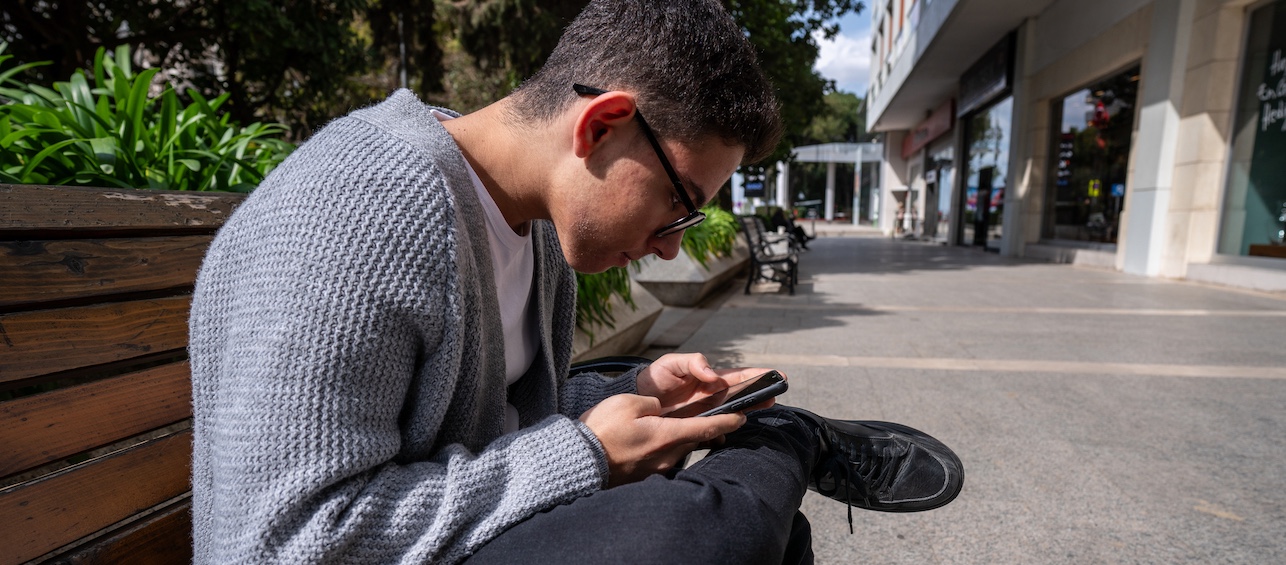A teen girl meets a “teen boy” online. The two talk via social networks and texts. Then the teen girl accepts an invitation to meet in person without her parents’ knowledge of the plans and without a complete understanding of who the “teen boy” is.
This story can go one of a million different ways. The meeting can be completely benign – it turns out the boy really is 15 and lives one school district over. They even have a mutual friend that they didn’t know about. It could also be the nightmare scenario that you’ve probably pushed out of your conscious mind more times than you can count.
It’s important to know that scenarios like this happen more often than we think they do and they are more common if the teen girl is sharing provocative or overly personal content online.
I’ve recently been studying the online behavior of 251 fourteen to seventeen-year-old girls. The study shows that 30 percent of the teenagers reported meeting someone offline that they first met online.
This study was designed specifically to determine if girls who have a history of abuse and/or neglect are at higher risk of taking the dangerous step of meeting someone in person. (Which they are.) But the findings are important across the board because they show us that many teenage girls are putting themselves out there in a sexually suggestive way – often a precursor to offline meetings. They’re doing, saying, watching and seeing things that they are not ready for and that they will probably regret.
Now, I don’t want you to think that the internet is a terrible place and that bad things happen all the time. Neither is true. But, ultimately, it is up to you to help keep them safe. You have to be willing to have tough conversations about often-uncomfortable material.
Internet and mobile technologies are changing at lightning speed and it’s difficult for us parents to stay in front of the things that adolescents are exposed to via these mediums. To put it simply, we’ll never know what they’re seeing or doing online unless we engage with them and form open lines of communication wherein they feel safe telling us.
And it isn’t about internet filtering software, also known as parental controls. I can really take or leave that technology. If you like it, keep using it, but our research showed that it didn’t make a difference in the behaviors of the study group. On the other hand, high quality parenting and parental monitoring did. It’s about a high-quality relationship in which the parent and child can each ask and answer questions about things they are experiencing, seeing or watching.
Starting a conversation is often the biggest hurdle for parents. An excellent way to approach the subject is to find a news story to make the conversation more real. You have to talk to them from a place of concern and love – “I don’t want this to happen to you.” If you are aware that your child has been sexually suggestive online in any way, you must never be shaming or accusing with that child. The damage caused by shaming can be enormous and it will never facilitate the type of communication that you are seeking.
It’s also a good idea to be Facebook friends with your kids. Note what they are posting and talk to them about what you see, especially if you witness unsafe behaviors. Let them know the implications of posting or sending racy or provocative images and pictures over the internet or via mobile devices. Discourage “friending” of anonymous or unknown Facebook users and reiterate to them that meeting someone offline whose identity is not fully confirmed is dangerous and is considered a “never event” in your house.
To date, all research conducted around teen online behaviors has been self-reported, in that the teen shared with the researchers “everything” he or she was doing online. We are changing that.
Over the next 5 years, we will be reporting results of an objective study. We’re looking at actual data and not asking the kids what they’re doing. We’ve provided a laptop – on which parents can install parental control software if they wish – that captures data on everything they do, see, watch and say. The data will give us each participant’s digital “footprint” which will allow us to dig deeper into the factors that influence risky online behaviors in teen girls.
The new research is funded by the NIH because they realize that we don’t know enough about how new technologies are affecting our kids
My hope is that our findings will be used to design more effective internet safety campaigns, particularly for high-risk populations of teens.
We will never be able to stay ahead of what our teens are doing online, but with supportive relationships and frequent communication, the research shows we can keep them safe and foster respect for the power of the internet.
Editors note: If you are a teen who has been abused or neglected and you need help, please call the Mayerson Center for Safe and Healthy Children at 513-636-SAFE (7233), they will help you.






Thank you for posting this enlightening information!This provides some great information including proof that parents need to take a more active role in our children’s online life. I love the advice to get the conversation started with kids. We advocate the same in our Saving Face program! https://haytheresocialmedia.com/savingface/
Kids may be tech savvy, but they are not socially savvy or emotionally mature!
Sheri Watkins